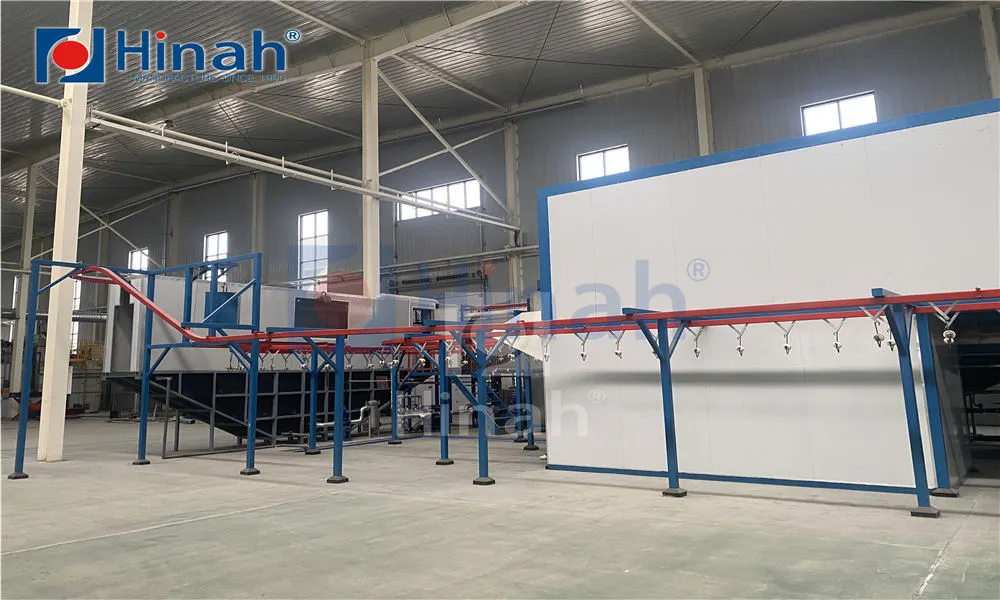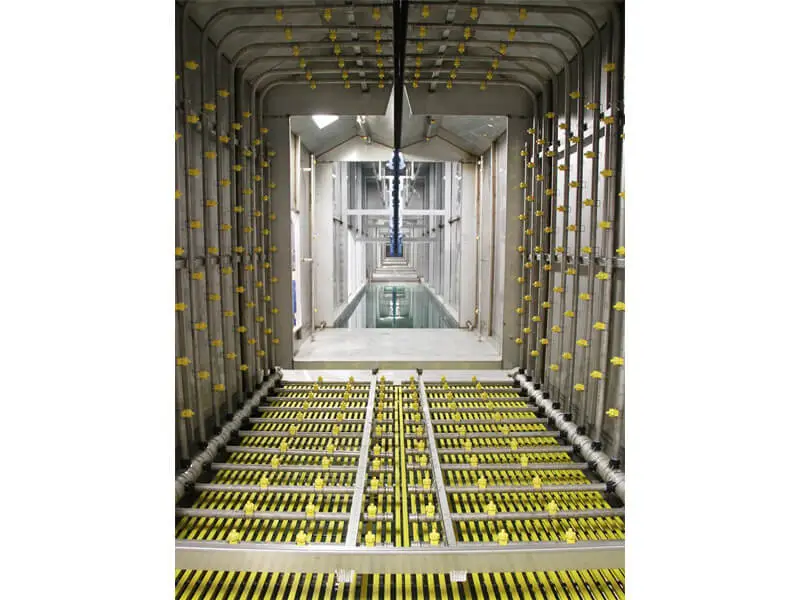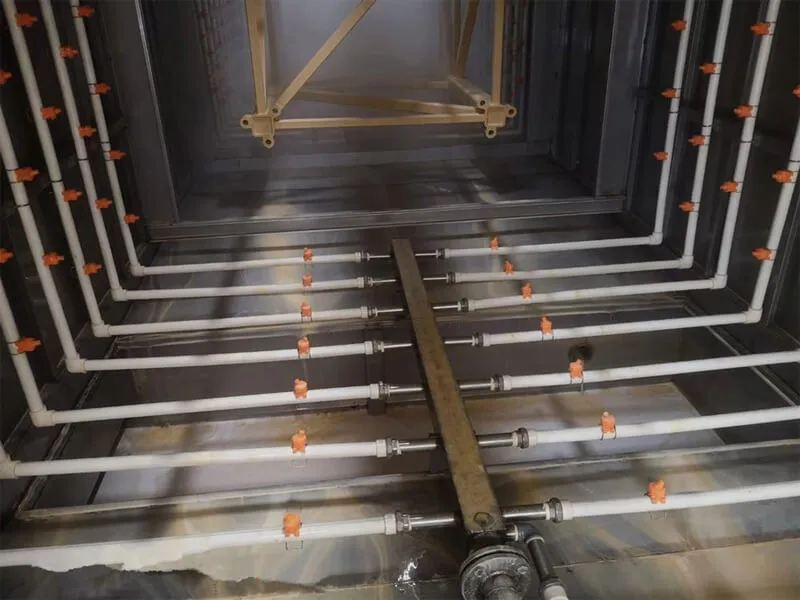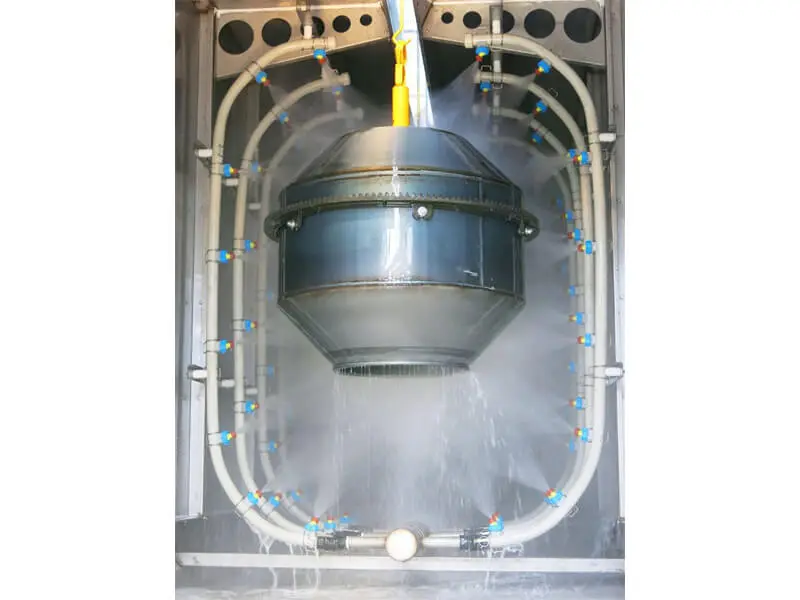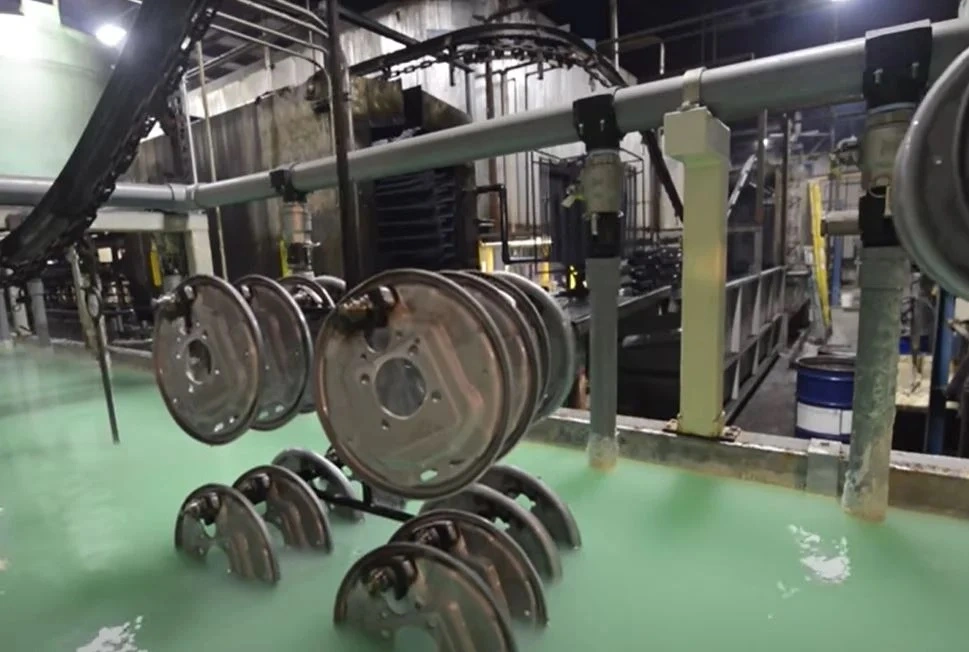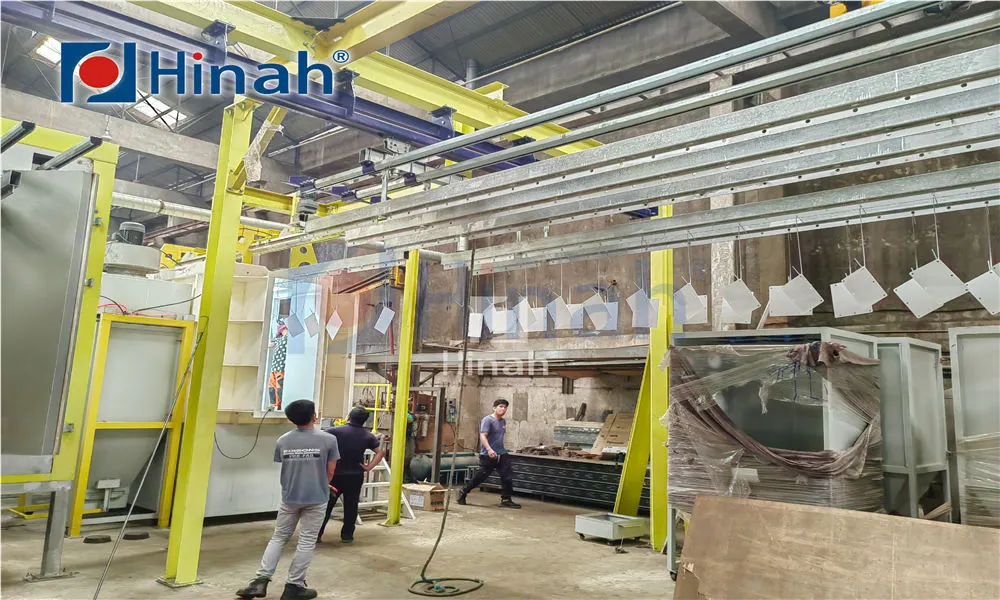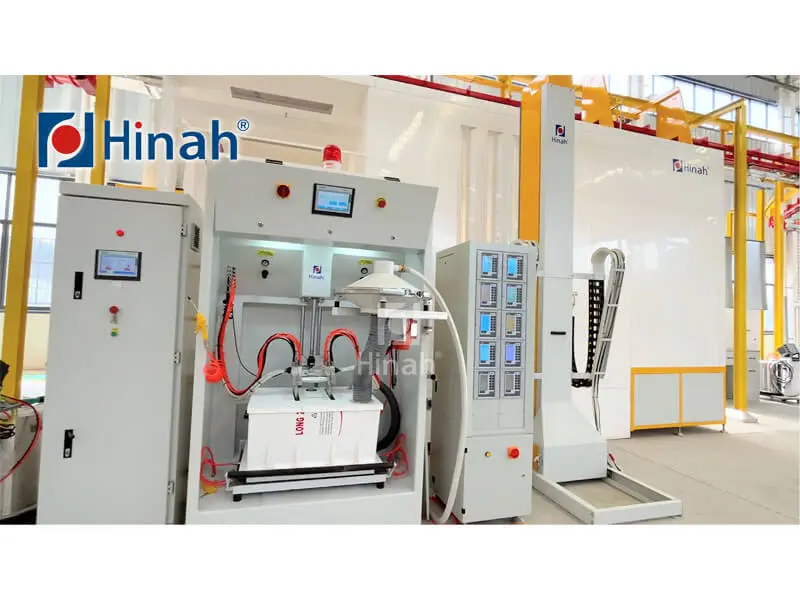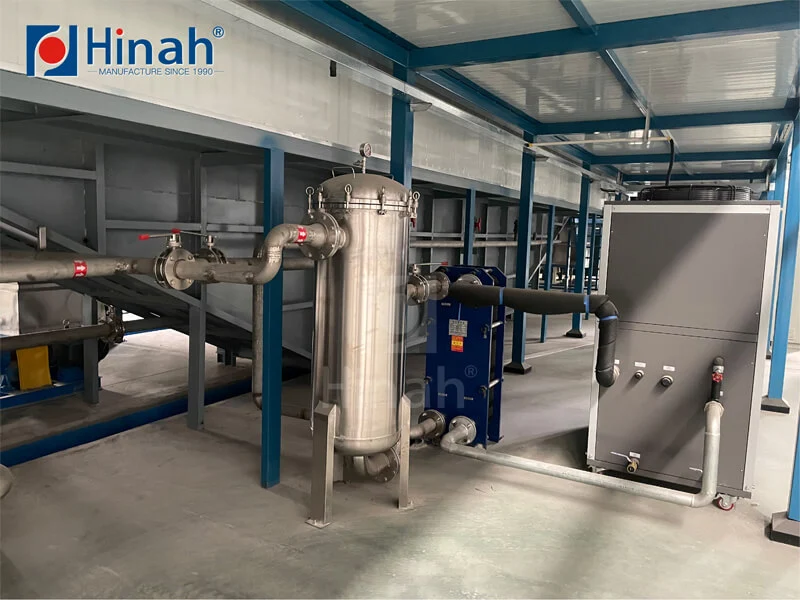In today's fast-paced industrial landscape, the demand for durable, high-quality, and environmentally friendly coating solutions has never been higher. Automated powder coating systems have emerged as a game-changer, revolutionizing how manufacturers apply protective and decorative finishes to various products. These systems leverage advanced technology to streamline processes, reduce waste, and improve consistency, making them a cornerstone in industries ranging from automotive to aerospace. Unlike traditional liquid coatings, powder coatings are free of solvents and emit minimal volatile organic compounds (VOCs), aligning with global sustainability goals. This article delves into the intricacies of automated powder coating systems, exploring their components, benefits, costs, and common challenges. By understanding how automatic coating machine setups operate and their impact on powder coating manufacturing, businesses can make informed decisions to optimize their operations. Whether you're considering investing in a new system or upgrading an existing one, this comprehensive overview will provide valuable insights into the world of powder spray machine technology and its practical applications.
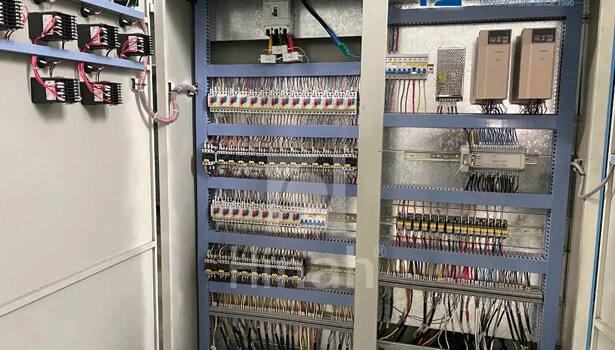
Automated powder coating systems represent a sophisticated approach to applying dry powder to surfaces, which is then cured under heat to form a hard, durable finish. These systems are designed to minimize human intervention, utilizing robotics, conveyor systems, and precise control mechanisms to ensure uniform coverage and high efficiency. At their core, automated powder coating systems integrate various components, such as spray booths, guns, and recovery units, to handle tasks like pretreatment, application, and curing seamlessly. The rise of Industry 4.0 has further enhanced these systems with IoT connectivity, allowing for real-time monitoring and predictive maintenance. This automation not only boosts productivity but also reduces errors associated with manual processes, making powder coating systems ideal for high-volume production environments. For instance, in automotive manufacturing, these systems apply consistent coatings to parts like chassis and wheels, enhancing corrosion resistance and aesthetic appeal. As industries seek to improve quality and reduce operational costs, the adoption of automated powder coating systems continues to grow, driven by their ability to deliver superior results with minimal environmental impact.
The Role of Automatic Coating Machines in Industrial Processes
Automatic coating machines are the workhorses of modern powder coating systems, enabling precise and repeatable application across diverse substrates. These machines typically include robotic arms or fixed automators that guide powder spray guns along predefined paths, ensuring even distribution without overspray. In a typical setup, an automatic coating machine might be integrated into a conveyor line, where parts move through various stages—cleaning, coating, and curing—without manual handling. This automation enhances speed and accuracy, critical in sectors like electronics, where delicate components require meticulous coating to prevent damage. Moreover, automatic coating machines can be programmed for complex geometries, adapting to different shapes and sizes without compromising quality. For example, in furniture manufacturing, these systems apply powder coatings to metal frames, providing a scratch-resistant finish that meets consumer demands for durability. By reducing labor costs and minimizing material waste, automatic coating machines contribute significantly to the overall efficiency of powder coating manufacturing. Their versatility also allows for customization, such as switching between colors or textures quickly, which is essential for just-in-time production models. As technology advances, we're seeing more intelligent features, like vision systems that detect part orientation and adjust spraying parameters accordingly, further optimizing the coating process.
Key Components of Powder Coating Systems
Powder coating systems consist of several integral parts that work together to achieve a flawless finish. Understanding these components is crucial for evaluating system performance and troubleshooting issues. First, the pretreatment stage involves cleaning and preparing the surface through processes like phosphating or chromating, which remove contaminants and enhance adhesion. Next, the application phase relies on powder spray machines, which electrostatically charge the powder particles and direct them onto the grounded workpiece. These powder spray machines often include guns, hoppers, and control units that regulate flow and voltage for consistent results. The recovery system, another vital component, captures overspray powder for reuse, reducing waste and lowering material costs—a key consideration in powder coating machine cost analyses. Finally, the curing oven uses heat to melt and fuse the powder into a continuous film, typically at temperatures between 150°C and 200°C. In automated powder coating systems, these elements are synchronized via programmable logic controllers (PLCs), allowing for seamless operation across high-volume lines. For instance, in appliance manufacturing, powder coating systems ensure that refrigerators and washing machines have uniform, attractive finishes that resist chipping and fading. Regular maintenance of these components, such as cleaning filters and calibrating guns, is essential to prevent downtime and maintain quality, highlighting the importance of a well-designed system in powder coating manufacturing.
Factors Influencing Powder Coating Machine Cost
When considering an investment in automated powder coating systems, understanding the factors that affect powder coating machine cost is essential for budgeting and ROI calculations. The overall cost can vary widely, from tens of thousands to hundreds of thousands of dollars, depending on several variables. System size and capacity play a significant role; larger setups for high-throughput production, such as those in automotive plants, will naturally cost more due to expanded infrastructure like oversized booths and conveyors. Additionally, the level of automation influences price—basic automatic coating machine models may be affordable, but advanced systems with robotics and AI integration command premium prices. Another key factor is the type of powder spray machine used; for example, triboelectric guns might be cheaper than corona guns, but the latter offer better performance for certain applications. Material costs, including the powder itself and ancillary items like filters, also contribute to ongoing expenses. Moreover, installation, training, and maintenance services can add to the initial powder coating machine cost, so it's wise to factor in long-term operational outlays. In powder coating manufacturing, energy consumption during curing is another cost driver, as ovens require substantial electricity or gas. To illustrate, a small business might invest in a compact automated powder coating system for around $50,000, while a large-scale operation could exceed $500,000. By analyzing these elements, companies can make informed choices that balance upfront investment with future savings through improved efficiency and reduced waste.
How Powder Spray Machines Operate in Coating Applications
Powder spray machines are at the heart of any automated powder coating system, responsible for applying the dry powder to surfaces with precision and efficiency. These machines operate on the principle of electrostatic attraction: the powder particles are charged either by corona or triboelectric methods, while the workpiece is grounded, creating an attractive force that ensures even coverage. In a typical process, powder is fluidized in a hopper and transported through hoses to the spray gun, where it's emitted as a fine mist. Automatic coating machine setups often use multiple guns mounted on reciprocators or robots to cover large or complex parts uniformly. For instance, in the architectural industry, powder spray machines coat aluminum profiles for windows and doors, providing a weather-resistant barrier. The efficiency of these machines lies in their ability to minimize overspray; modern designs include recovery systems that recycle unused powder, reducing material costs and environmental impact. Additionally, powder spray machines can be adjusted for different flow rates and patterns, allowing operators to tailor applications based on part geometry and desired finish thickness. In powder coating manufacturing, regular calibration of these machines is crucial to maintain quality, as issues like clogging or inconsistent charging can lead to defects. By integrating smart sensors, newer models can self-diagnose problems and optimize performance in real-time, further enhancing the reliability of automated powder coating systems.
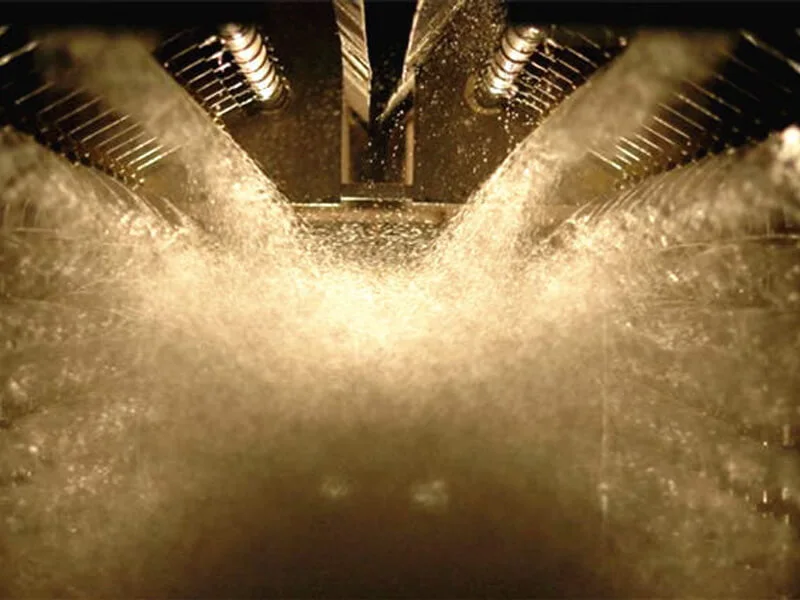
The Impact of Powder Coating Manufacturing on Industry
Powder coating manufacturing has transformed industrial processes by offering a sustainable and efficient alternative to traditional liquid coatings. This method involves producing the powder itself—typically a mixture of resins, pigments, and additives—that is applied via automated powder coating systems. The manufacturing process begins with raw material selection, followed by extrusion, grinding, and sieving to achieve the desired particle size and consistency. In industries like consumer goods and machinery, powder coating manufacturing ensures that products meet stringent quality standards for durability and aesthetics. For example, outdoor equipment manufacturers rely on these coatings to protect against UV radiation and corrosion, extending product lifespans. The shift toward powder coating systems has also driven innovation in material science, with developments in low-temperature cure powders and specialty finishes for unique applications. Moreover, powder coating manufacturing supports circular economy principles, as overspray can be collected and reused, minimizing waste. When integrated with automatic coating machine technology, this approach streamlines supply chains and reduces time-to-market for new products. However, it requires careful management of factors like humidity and storage conditions to maintain powder integrity. Overall, the growth of powder coating manufacturing underscores its role in promoting eco-friendly practices while delivering high-performance results, making it a key player in the future of industrial finishing.
Common Problems in Automated Powder Coating and Their Solutions
Despite their advantages, automated powder coating systems can encounter issues that affect performance and output quality. Recognizing these common problems and implementing solutions is vital for maintaining efficiency in powder coating manufacturing. One frequent issue is uneven coating thickness, often caused by improper gun settings or worn components in the powder spray machine. This can lead to defects like orange peel or poor adhesion. To address this, operators should regularly calibrate the automatic coating machine, check air pressure, and ensure consistent powder flow. Another common problem is contamination, where dirt or oil on the substrate results in pinholes or craters. Implementing rigorous pretreatment processes and maintaining clean work environments can mitigate this. Additionally, problems with powder recovery systems, such as clogged filters, can increase powder coating machine cost due to wasted materials. Regular maintenance and using high-quality filters are effective countermeasures. Curing-related issues, like under- or over-curing, may arise from oven temperature fluctuations; installing reliable temperature controls and monitoring systems can prevent this. In automated powder coating systems, electrical faults in robotics or conveyors can cause downtime, so proactive inspections and spare part inventories are recommended. For instance, in high-volume applications, scheduling preventive maintenance during off-peak hours helps avoid disruptions. By understanding these challenges and adopting best practices, businesses can maximize the benefits of their powder coating systems, ensuring consistent, high-quality finishes that meet industry standards.
In conclusion, automated powder coating systems have become indispensable in modern industry, offering a blend of efficiency, quality, and environmental benefits. From the core components of automatic coating machines to the economic considerations of powder coating machine cost, this technology continues to evolve, driven by advancements in automation and material science. Powder spray machines and integrated powder coating manufacturing processes enable businesses to achieve durable, attractive finishes while minimizing waste and operational costs. However, as with any complex system, challenges such as uneven coatings or equipment malfunctions require vigilant management and proactive solutions. By investing in proper training, maintenance, and technology upgrades, companies can harness the full potential of automated powder coating systems to stay competitive in a dynamic market. As industries worldwide prioritize sustainability and precision, these systems will undoubtedly play a pivotal role in shaping the future of surface finishing, making them a wise choice for any forward-thinking organization.


